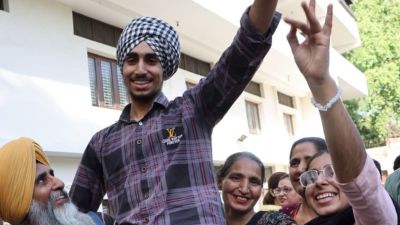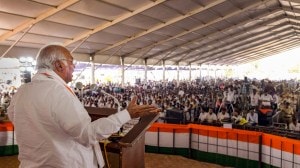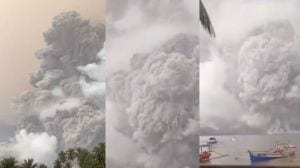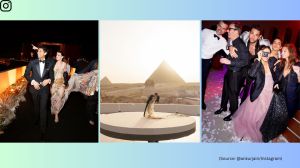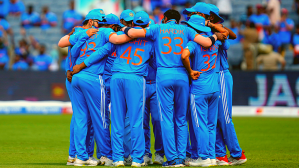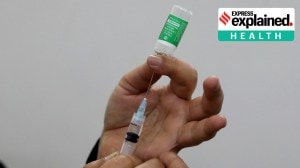- India
- International
Iran launches attacks on Israel: Who are the Iran-backed regional groups of concern?
Since Hamas attacked Israel on October 7, a threat of widening regional conflict has loomed in the Middle East. What are some of the regional actors here and why does Iran back them?
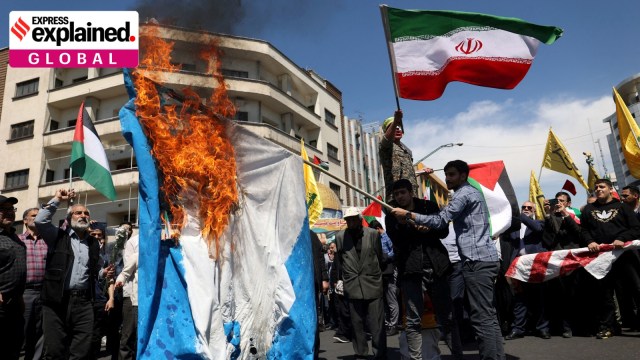 Iranians burn an Israeli flag during a rally marking Quds Day and the funeral of members of the Islamic Revolutionary Guard Corps who were killed in a suspected Israeli airstrike on the Iranian embassy complex in the Syrian capital Damascus, in Tehran, Iran, April 5, 2024. (Photo: Reuters)
Iranians burn an Israeli flag during a rally marking Quds Day and the funeral of members of the Islamic Revolutionary Guard Corps who were killed in a suspected Israeli airstrike on the Iranian embassy complex in the Syrian capital Damascus, in Tehran, Iran, April 5, 2024. (Photo: Reuters)On April 14, Iran launched hundreds of drones and missiles towards Israel, in retaliation for an Israeli attack on its consulate that occurred in Damascus, Syria, two weeks ago. Several senior Iranian generals were killed and Iran had vowed to respond.
Iran and Israel have also been regional rivals for long. In the past few months, Iran has also blamed Israel for some other attacks that have taken place in the country. Israel, in turn, has not claimed responsibility but has been critical of Iran supporting regional groups such as Hezbollah, the Houthis, and Hamas – the latter of which was responsible for the October 7, 2023, attacks on Israel.
Since then, there have been concerns over a widening war in the region beset by years of conflict between countries on religious and ethnic lines.
The presence of militant groups also adds to the instability and tensions, as they form an anti-US, anti-West “axis of resistance”. Here is what to know about them and what explains the support they enjoy from Iran.
First, why are these groups backed by Iran?
It has to do with the complex politics of the region. Iran has long been critical of Israel’s creation in 1948, seeing it as a means for the United States (and the West by extension), to influence the region for its strategic interests.

Further, as a Shia-majority nation in a region where most powers – such as regional heavyweight and US ally Saudi Arabia – are Sunni-majority, it has attempted to assert itself with the help of various non-state actors. Several of them are also inspired by Iran’s Islamic Revolution of 1979, which led to the creation of a theocratic state.
Suzanne Maloney, Vice President & Director of Brookings Foreign Policy, said earlier this year, “One of the most valuable tools in the Iranian arsenal is the network of militias that its leadership has cultivated, coordinated, trained, and supplied with advanced weaponry. The network extends across the broader Middle East from Lebanon to Pakistan, and these proxies have proven integral to Tehran’s security, longevity, and influence. They provide the Islamic Republic with strategic depth and wide regional influence and access while insulating Iran’s leadership from the full risk of their actions.”
Here is a look at some of the major actors:
1. Hamas and Palestinian Islamic Jihad
Hamas, a Sunni Islamist militant group, has been running the region of Gaza since 2007. It first emerged during the first Intifada or Palestinian uprising against Israeli rule in 1987. It opposes Zionism, the 19th-century political project that advocates for an ethnic homeland for the Jewish people. According to the think tank Council on Foreign Relations (CFR), it has 30 to 40,000 members.
The Palestine Islamic Jihad (PIJ) is another Sunni Islamist militant group. It aims to establish an Islamic state in Palestine. According to the US government, “It is the second-largest militant group in the Gaza Strip and the West Bank, founded in 1979 as an offshoot of the Muslim Brotherhood in Egypt.” Its military wing is the al-Quds Brigades and total membership is around one to 15,000 people, according to CFR.
2. Hezbollah
Hezbollah, meaning “Party of God”, is a Shiite militant organisation that was set up by Iran’s Revolutionary Guards in 1982 to fight Israeli forces that had invaded Lebanon that year. It is believed to possess a significant arsenal and has 30 to 45,000 members.
Israel and Hezbollah first fought a war in 2006 over a month and have often exchanged fire. Since October 7, cross-border attacks have taken place.
3. Houthis
The Houthis are a militant group that has been fighting the civil war in Yemen for a decade. After they seized power in the capital Sana’a in 2014, a Saudi-UAE alliance attempted to dislodge them. The Houthis now control northern Yemen, including Sana’a, and have a presence in most regions of the country.
With a strength of 10 to 30,000, they have been playing a role in the post-October 7 Middle East by attacking ships going through the Red Sea. This led some cargo carriers to pause movement for some time. By blocking a major shipping route that connects Europe and Asia, the Houthis said they were expressing their opposition to the Israeli military action in Gaza following the Hamas attacks.
Additionally, there are thousands of Iran-backed fighters in Syria and Iraq. According to Reuters, “Syria is a key transit route for Iranian proxies between Iraq and Lebanon. After the Syrian civil war began in 2011, Iran intervened to prop up President Bashar al-Assad, deploying Guards advisers and fighters from Iraq, Pakistan and Afghanistan. Lebanese Hezbollah fought alongside these groups to preserve Assad. They remain deployed across Syria.”
Further, “Tehran backed Shi’ite militants in Iraq during the U.S. occupation and has maintained those links. The 150,000-strong Popular Mobilisation Forces (PMF), a state-sanctioned grouping of Iraqi paramilitaries, is dominated by heavily armed and battle-hardened groups loyal to Iran and with close ties to its Revolutionary Guards.”
More Explained
EXPRESS OPINION
Apr 30: Latest News
- 01
- 02
- 03
- 04
- 05


